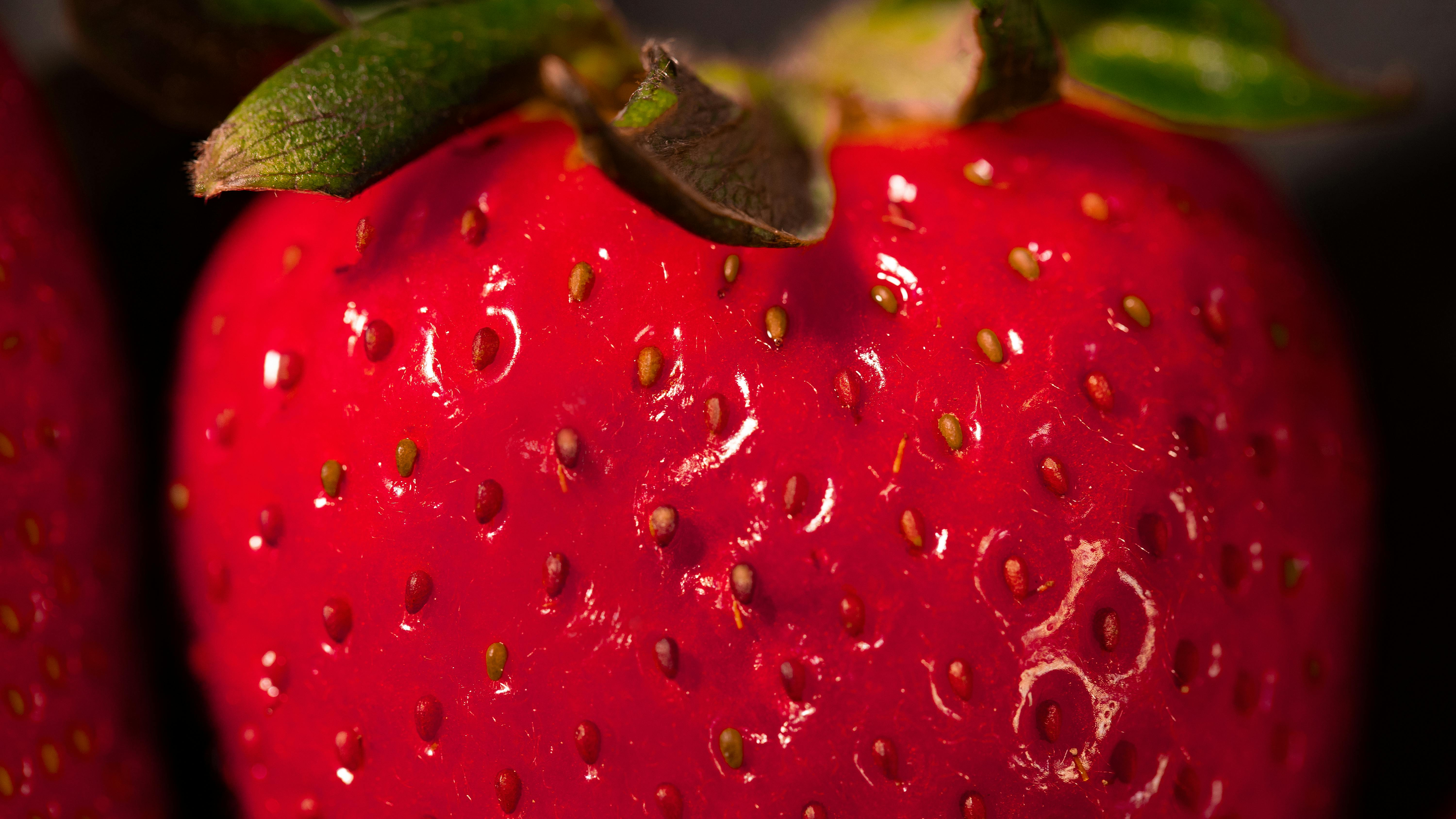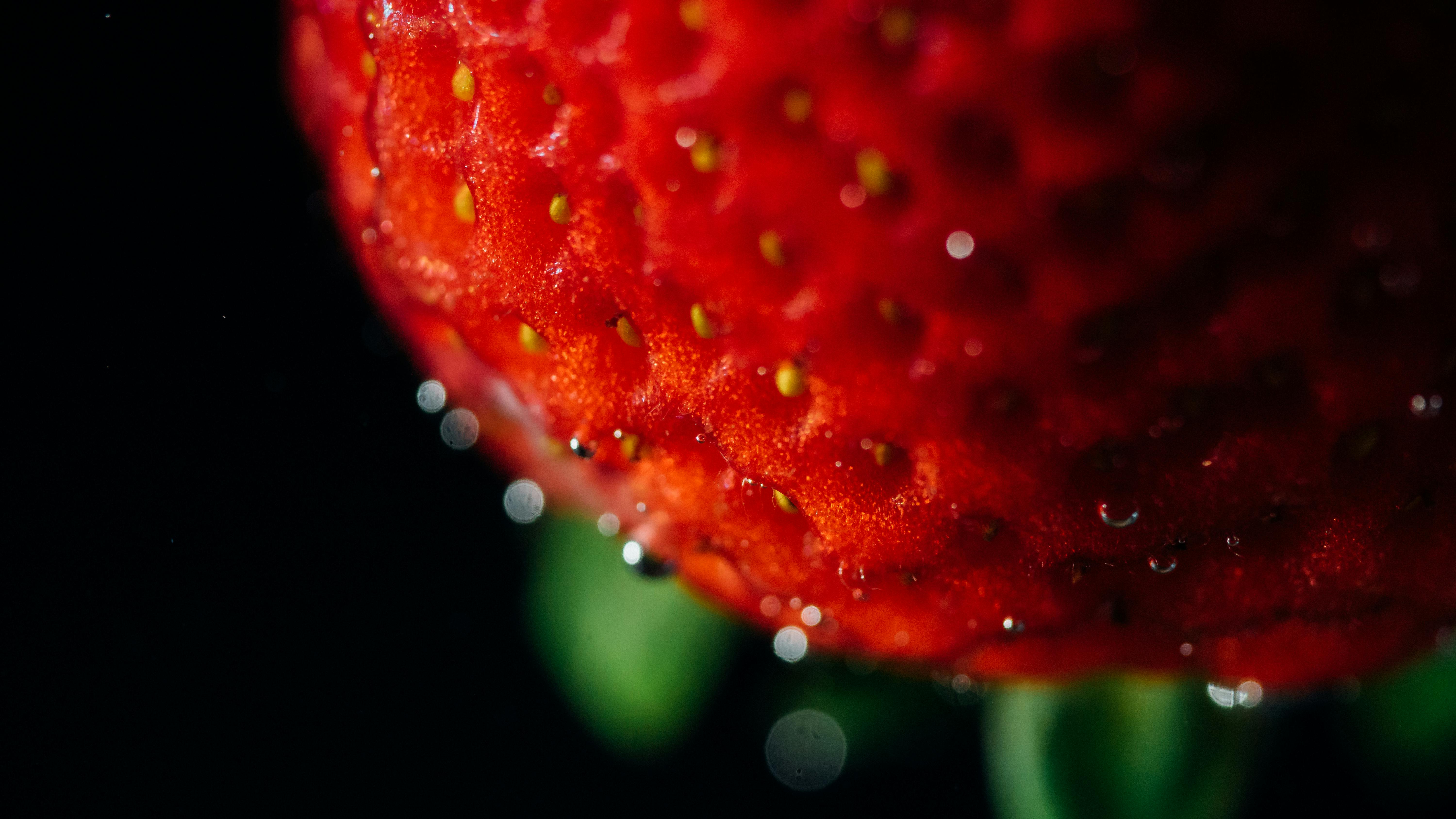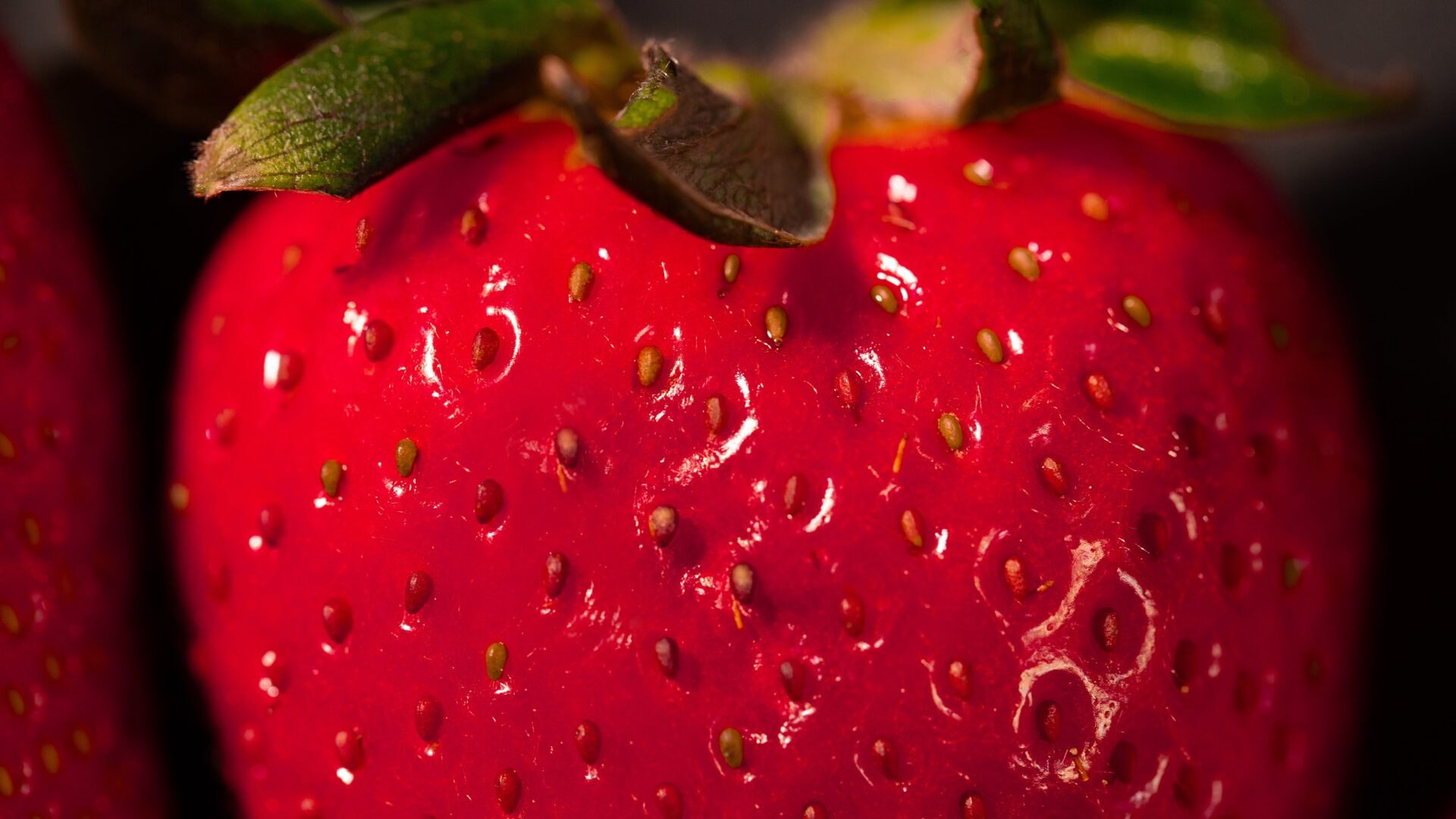Strawberry seeds are relatively easy to germinate and can be a fun project for novice gardeners. Knowing how long it takes for strawberry-seeds-in-paper-towel/” title=”How To Germinate Strawberry Seeds In Paper Towel”>strawberry seeds to germinate can help you plan your gardening activities accordingly. Depending on the variety, strawberry seeds generally take anywhere from a week to three weeks to germinate. This article will discuss the factors that affect the germination time of strawberry seeds and how to ensure successful germination of your strawberry seeds.Strawberry seeds typically take between 7 and 14 days to germinate. This can vary depending on the temperature and moisture of the soil.
Environmental Factors
Environmental factors play a major role in strawberry seed germination. Temperature is one of the most important environmental factors, as it directly affects the rate of germination and the overall success of the process. Optimal temperatures for strawberry seed germination are between 70-85°F. If temperatures are too low, seeds will remain dormant and not germinate. On the other hand, if temperatures are too high, the seeds may not be able to survive and may die off before they can even start to germinate. Additionally, sufficient moisture is needed for successful seed germination; without enough moisture, the seeds will dry out and not be able to germinate. Lastly, adequate light is also necessary during this process; when seeds are exposed to light they will begin to produce chlorophyll and become photosynthetically active.
Genetic Factors
In addition to environmental factors, genetic factors also play a role in strawberry seed germination. Different varieties of strawberries have different genetic makeup which can affect their ability to germinate under certain conditions. For example, some varieties may be more tolerant of lower temperatures than others and may have higher success rates when it comes to germination in cooler environments. Additionally, different varieties may require different amounts of water or light for successful seed germination so it’s important to select an appropriate variety for the particular environment where they will be grown.
Soil Quality
The quality of soil also plays an important role in strawberry seed germination. Soils that contain nutrients such as nitrogen, phosphorus, and potassium can help promote healthy growth and development after seeds have been planted. Additionally, soils that are well aerated with plenty of organic matter provide optimal conditions for successful seed growth and establishment. Poorly drained soils can cause waterlogging which can lead to root rot or other diseases that can kill off newly planted seeds.
Overall, environmental factors such as temperature, light exposure, and moisture levels all play a significant role in strawberry seed germination along with genetic factors that vary from variety to variety and soil quality which helps promote healthy growth after planting. Keeping these factors in mind when selecting a variety or growing environment is essential for successful strawberry cultivation
Preparing Strawberry Seeds for Germination
Before you can begin the process of germinating strawberry seeds, you need to first prepare them. This involves cleaning the seeds, removing any debris, and sorting them by size. This will help to ensure that only the viable seeds are used in the process.
Once the seeds have been sorted, it is important to determine if they are viable. The best way to do this is by performing a simple float test. To do this, fill a bowl or container with lukewarm water and add the strawberry seeds. Any viable seeds will sink to the bottom whereas any non-viable ones will float at the top. Remove any floating seeds from the container and discard them.
Once you have identified which seeds are viable, it is important to properly store them until you’re ready to germinate them. Place the viable strawberry seeds in a cool, dry place with a temperature of around 40°F (4°C). The ideal storage container should be airtight and provide protection from moisture and light.
When you’re ready to begin germinating your strawberry seeds, you may want to soak them overnight in lukewarm water before planting them. This helps soften their outer coat and allows for better absorption of water which can speed up germination time. Once they have been soaked for 12-24 hours remove any excess water before planting them in their containers or beds.
With proper preparation and storage of your strawberry seeds, you can be sure that they will have a greater chance of successful germination when it comes time to plant them.
Strawberry Seed Germination
Strawberry seed germination is an essential process for successful strawberry production. To ensure optimal strawberry seed germination, there are certain requirements that must be met. These include the provision of adequate moisture, temperature, light, and soil pH.
Moisture is an important factor in the successful germination of strawberry seeds. The soil should be moist but not wet. Too much water can cause the seeds to rot and prevent them from germinating. The ideal moisture level for strawberry seed germination is around 70%.
The temperature required for successful germination of strawberry seeds is also an important factor to consider. The optimum temperature range for strawberry seed germination is between 68-72°F (20-22°C). Temperatures outside of this range can adversely affect the success of your crop.
Light is also a key factor in successful strawberry seed germination. Seeds will need exposure to sunlight or artificial light source in order to sprout and grow successfully. Artificial lights should be placed close enough to the seeds to provide adequate light for germination, but not so close that they burn or dry out the seeds.
Soil pH is another important factor in ensuring optimal strawberry seed germination. Strawberry plants prefer a soil pH between 6 and 7, which is slightly acidic. If the soil pH is too high or too low, it can inhibit the growth of your crop and reduce its yield.
By taking into account all these factors and providing the proper requirements for optimal strawberry seed germination, you can ensure that you have a successful crop of strawberries each season!
Recommended Temperature for Strawberry Seed Germination
Strawberry seed germination is best accomplished with temperatures between 65-75°F (18-24°C). Lower temperatures cause a longer germination time, while higher temperatures can result in poor or non-existent germination. When starting strawberry seeds indoors, it is important to provide adequate warmth and light to ensure good germination success. This can be done by using a heating pad or warm soil mix, as well as providing bright light for at least 12 hours a day. Additionally, it is important to keep the soil moist but not wet in order for the seeds to successfully sprout. Once the seedlings have emerged, the temperature can be lowered slightly if necessary.
It should also be noted that different varieties of strawberry may require different temperatures for successful germination. For this reason, it is important to check the seed packet or do some research before planting in order to determine the optimal temperature for each variety. Additionally, some varieties may have a higher tolerance for cooler temperatures than others. By following these guidelines and providing adequate warmth and light, it is possible to ensure successful strawberry seed germination.

Recommended Soil Conditions for Strawberry Seed Germination
Strawberry seeds need specific soil conditions to germinate successfully. The soil should be loose and light, with a slightly acidic pH level ranging from 5.8 to 6.2. It should also be well-drained and have adequate moisture content for the seeds to sprout. Additionally, the soil should be free of weeds, debris, and any other contaminants that may prevent the strawberry seedlings from growing properly. To ensure optimal growth of strawberry plants, it is important to prepare the soil correctly prior to planting the seeds.
Before planting any seedlings or seeds, it is important to test the soil’s pH level and adjust it accordingly if needed. Adding organic matter such as compost or manure can help reduce the acidity of the soil as well as improve its moisture-holding capacity. Once the pH level is adjusted, it is important to till the soil in order to loosen it up and allow for better drainage. Adding a layer of mulch can also help keep moisture levels consistent and prevent weeds from growing in the area.
Once prepared, strawberry seeds can be planted directly into the ground or into pots filled with sterile potting mix. When planting directly into the ground, make sure that each seed is planted at least 2 inches (5 cm) apart in rows that are spaced at least 12 inches (30 cm) apart. Planting into pots requires less space but more frequent watering since potting mix tends to dry out quickly compared to garden soil.
By following these steps and ensuring that your soil has optimal conditions for strawberry seed germination, you will be able to ensure healthy growth of your plants and obtain a bountiful harvest of sweet strawberries!
Light Conditions for Strawberry Seed Germination
Strawberry seeds need the proper light conditions to germinate and grow. The ideal light conditions for germination are a combination of bright indirect sunlight and shade. Direct sunlight can cause the seeds to overheat and die, while too little light can prevent them from germinating at all. The best way to provide enough light for strawberry seed germination is to place the seeds in a sunny window or under fluorescent lights that are kept on 12-14 hours per day. If using fluorescent lights, make sure they are placed about 6 inches away from the seeds so they don’t get too hot.
It is also important to provide adequate moisture during the germination process. Keep the soil slightly moist by watering regularly and misting it with water daily. A good rule of thumb is to keep the soil damp but not wet enough that it would cause mold or mildew to develop on the seeds. Once the seedlings appear, reduce watering so that the top few inches of soil remain dry between waterings.
Temperature is also an important factor in strawberry seed germination, as temperatures that are too high or too low can inhibit growth. The optimum temperature for successful germination is between 65-70°F (18-21°C). If temperatures dip below 55°F (12°C) or rise above 75°F (24°C), it can be difficult for strawberry seeds to germinate successfully.
Watering Requirements for Optimal Strawberry Seed Germination
Strawberry seeds have specific watering requirements in order to ensure optimal germination. In order to encourage strong, healthy seedlings, the soil should be kept moist but not overly saturated. The soil should also be well-drained, as standing water can cause the seeds to rot. When watering strawberry seeds, it is important to use lukewarm water and to avoid over-watering, as this can cause the seeds to become waterlogged and die. Additionally, it is important that the soil temperature remain between 65 and 75 degrees Fahrenheit for optimal germination.
It is also important to note that strawberry seeds require light for germination. While direct sunlight should be avoided, some indirect light is beneficial in helping the seeds germinate more quickly and evenly. If possible, a grow light can be used to provide additional light.
Finally, in order to help the soil retain moisture and provide additional nutrients for the growing plants, a thin layer of mulch can be applied around the strawberry plants after they have sprouted. This will help keep the soil cool and moist during hot summer months and will also help protect against weeds that may compete with the strawberries for resources.
In summary, watering strawberry seeds requires careful attention in order to ensure optimal germination conditions. The soil should remain moist but not overly saturated, while temperatures should stay between 65 and 75 degrees Fahrenheit during germination. Additionally, some indirect light is beneficial for encouraging strong seedlings while a thin layer of mulch helps retain moisture and protect against weeds.

Conclusion
Strawberry seeds take about two to three weeks to germinate, and the process can be accelerated by pre-soaking the seeds before planting them. Once planted, the seedlings should be kept in a warm, well-lit environment with plenty of moisture. Properly cared for, strawberry plants can produce fruit within a couple of months. Although strawberry plants are relatively easy to grow and maintain, the best results will be achieved with careful attention and monitoring. With the right conditions and proper care, growing strawberries from seed can be an enjoyable and rewarding experience.
In conclusion, strawberries are an easy and rewarding plant to grow from seed. Seeds usually take two to three weeks to germinate under optimal conditions. However, by pre-soaking the seeds, this process can be expedited. Once planted, they require a warm, well-lit environment with enough moisture in order for them to thrive. With proper care and attention, strawberry plants will produce delicious fruits within a few months’ time – making growing strawberries from seed a highly valuable endeavor!



